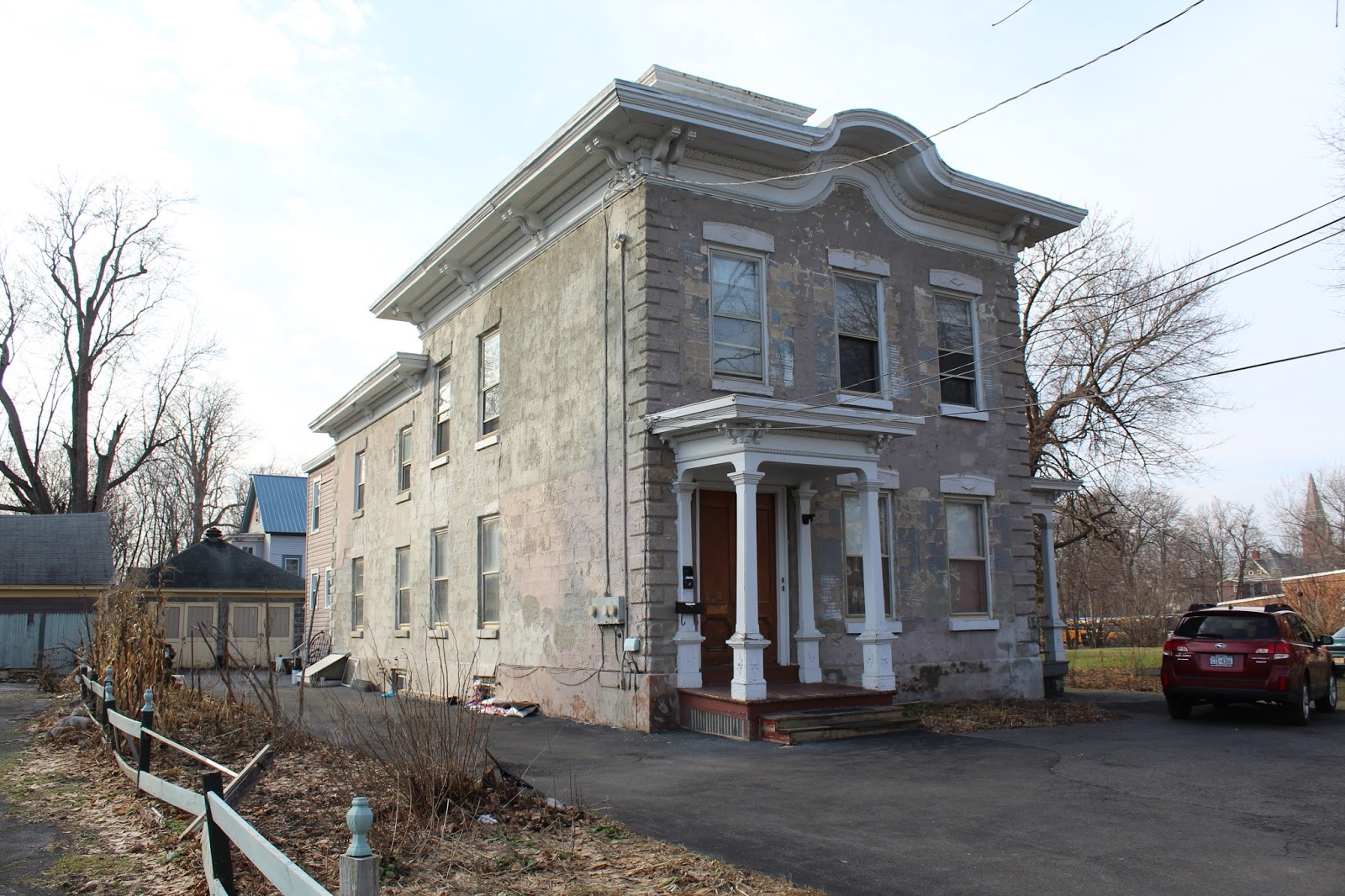
The cobblestone house in Cardiff is somewhat unusual in that it carries not only the usual sill with its band of cut stones providing a solid flat base over the foundation on which to build a square and level house, but also a solid cut stone band at mid-point up the wall above the windows, and again, partially, above the second floor windows as well.
As a technique, placing a course of cut stones around each level of a building goes back to structural techniques in ancient Greece (the ancient Egyptians and Babylonians used a different technique, preferring instead walls leaning inward). It is called a "string course". It adds considerable structural strength to a structure by tying it together at each level with a band of heavy cut stones. In modern architecture, we typically place a band of steel beams around each floor of a high-rise structure; same idea, But those incredible mathematical Greeks thought of it first.
Still, it is rare in housing architecture because typically these structures are small and don't require the added strength it brings. The builder of this house understood the technique and wanted to make sure this structure stood firm forever. Think of how difficult this is, given the manual building techniques of house construction of the day, hoisting up such large sections of cut stone with pulleys, block & tackle. In contrast, mortaring together a bunch of small cobblestones row by row, working from flimsy scaffolding, is a cinch.
Stylistically, the house is Early Greek Revival, not Federal or Neo-Classical, given its Greek temple-front orientation together with its plain flat detailing, as opposed to the fine carved mouldings typical of the previous Neo-Classical phase. The heavy coffered door, while probably new, is perfect for the house, being totally Greek in style.
One last link with the past, although nobody would have been aware of this in 19th century upstate New York, is that ancient Greek houses some 2500 years ago, employed small fist-sized rubblestone wall construction quite similar to, though less organized than the cobblestone technique. All ancient Greek houses had a pebbly stone exterior framed in cut stone much like our cobblestone houses (but with a simple sloped clay tile roof, not the neat temple-style roof our houses carry).
The seafaring Greeks (mainly the Athenian Empire) spread the technique all over the ancient World from the Black Sea (future Russia and Turkey) to the western Mediterranean (future Italy, France and Spain) through their many coastal colonies, well before the Romans came along. Once planted throughout Europe, the technique spread north through Germany and into England, mostly due to the later Roman Empire. These techniques survived the collapse of these empires by being transmitted from builder to builder over the centuries.
Organizing the cobblestones in neat rows is a refinement introduced by medieval England in the south-east and north-west of England around 1300 at the height of medieval prosperity. Cobblestone masons in New York (many of them, we suspect, hailing from England) carried the refinement even further such that upstate New York represents the ultimate expression in cobblestone building.
It is always amazing how ideas are carried and transmitted through time by simple builders just doing what their forbears did, while introducing little refinements along the way. It is probably safe to say that an ancient Greek builder from Athens around 500 B.C., if teleported to this house today, would actually recognize both the style and structural method, while being impressed at the surface treatment of the cobblestones.

Justus Newell, who built the cobblestone house in Cardiff, built this Italianate-style house in 1872 at what is now 1622 South Salina Street. This was the first house built in Syracuse with an early form of concrete blocks devised by Newell, having learned the process of mixing and forming cement to produce building blocks. He owned a nearby sand and gravel bed.
¹ Professor Hanna is a specialist in heritage studies, vernacular architecture and transportation history at the University of Quebec at Montreal.
Richard Palmer blog.